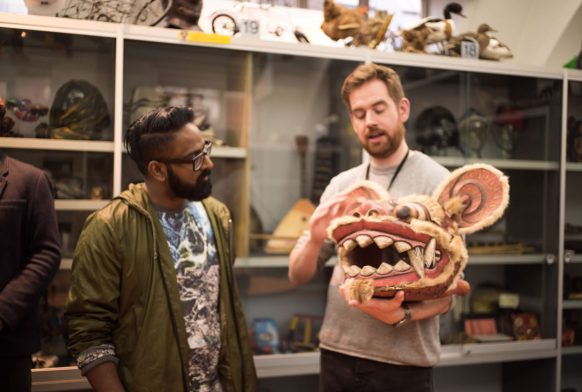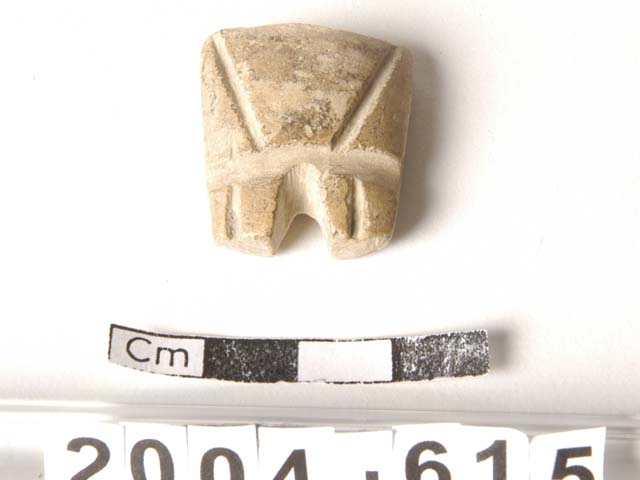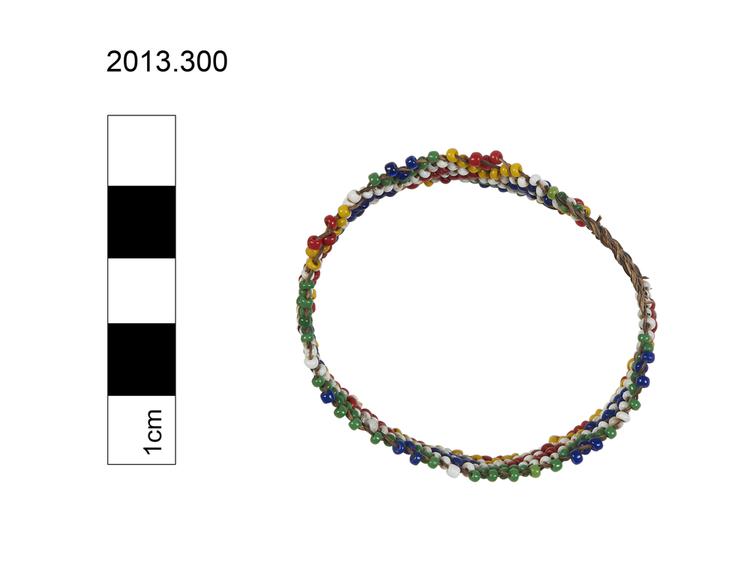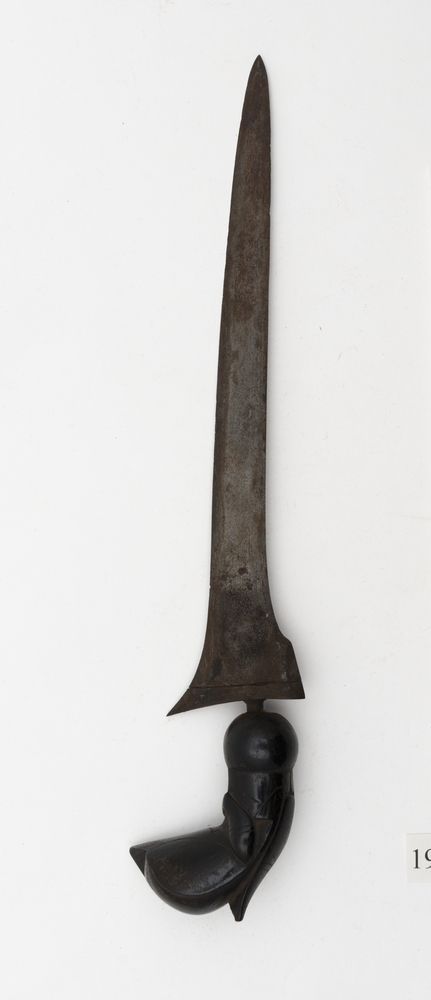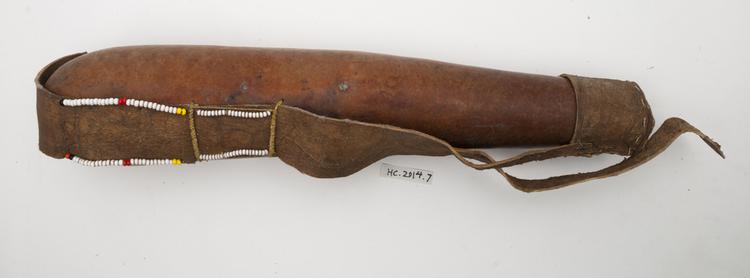
Maasai milk gourd, 'Amala', from Kenya.
Research by 'Rethinking Relationships' project researcher, Ken Simiyu: This object is depiction of how varied milk preparation was among the Maasai. This guard serves the same purposes as Amala with colourful beads and straps along its edges. The lead is also made of leather purposely to keep dirt and insects out as well as avoid accidental spillage. The cultural significance remains a symbol of milk preparation and preservation. Other objects that may be used alongside it (jewellery, musical instruments, everyday items etc.) Indeed the gourd was traditionally accompanied by eye catching beads and other jewelleries basically for decoration purposes. Also, the stirring stick made from curved palm tree branches was vital in cleaning and stirring the milk into a smooth consistency. Well there are variations in terms of shapes and designs. For sizes, there are smaller variations meant for younger ones between the ages of 8 to 13 years old. With changing technological dispensation there are plastic variations cropping up largely for decorative and aesthetic purposes. Whether this object is real r tourist object, the answer is yes it is a real object made of natural plant material. It was mostly used made and used by women in accompany of young girls in an informal training. Indeed the modern version of the gourd due exists though mainly in plastic and metallic forms which is largely for aesthetic and decorative forms.



